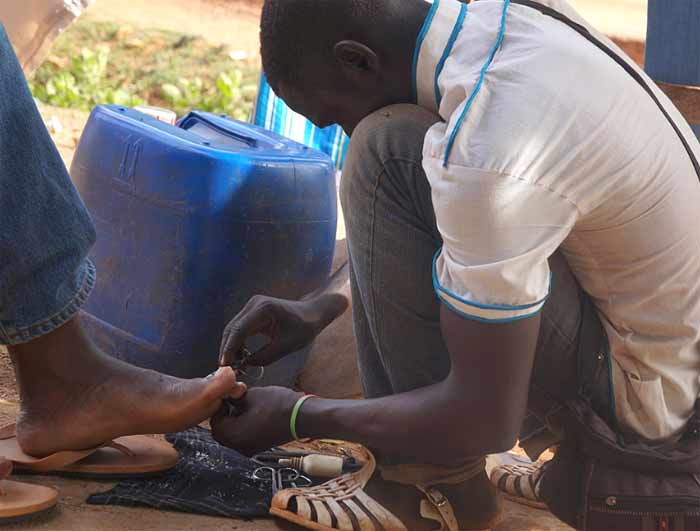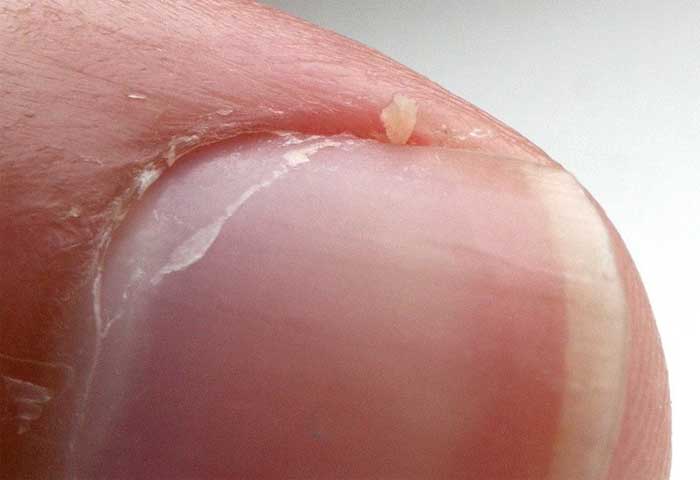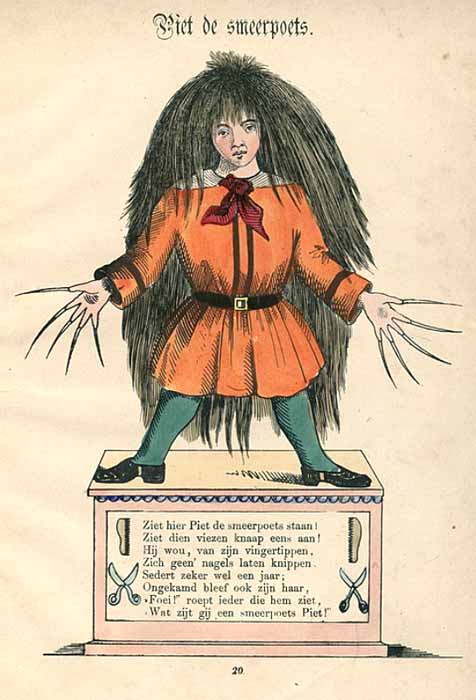Fingernail and toenail herbs
Herbs can heal fingernail and toenail problems.

Sometimes harsh chemicals and other external factors wreck havoc on the nails. In these cases, herbs can improve appearance and help nails to grow in healthier.
Horsetail, nettle, rosemary, sage, oat straw, evening primrose, garlic, and chamomile are all known to have beneficial effects on fingernails and toenails.
Drink herbal teas throughout the day and use herbs in fingernail soaks or foot baths.
Healthy fingernails and toenails are pink, smooth, strong, and shiny. They are not brittle or soft.
Herbs provide nutrients that the nails need to stay healthy. Some are best working from inside the body, some work on the nails from outside the body.
Hurray for herbal teas, lotions, and ointments!
In the summer, I make strong rosemary oatstraw tea and put it in a spray bottle. I use this herbal spray on my nails several times a day. It is refreshing and has a pleasant scent, plus keeps my nails healthy.
Give your nails a facial! A mixture of herbs, honey, avocado oil, and egg yolk can work wonders on ugly nails and cuticles. Apply thirty minutes every day for a month to see noticeable results.
Chamomile tea is delicious and can help nails grow stronger. Keep it on hand and drink in the evenings while relaxing.
Improving nail health may require some lifestyle changes.
Fingernails and toenails benefit greatly from good diet and exercise. When nails are unhealthy, there is usually an underlying cause.
Sometimes a simple thing like switching dishwashing detergents is all it takes to see improvement. Sometimes cutting back on sweets and eating more vegetables works wonders.
Nail health can be affected lots of things, from using strong household cleansers to eating junk food, especially sugar. Nails are also affected by underlying health problems like thyroid disease. Liver and lung disease can also affect fingernail and toenail health.

Try acupressure
Acupressure can improve nail health. Press three times for ten seconds on the moon of each nail.
Castor oil works!
Rub in a few drops of castor oil concentrating on the cuticle area. Other beneficial oils include diluted carrot seed oil, lavender essential oil, and sandalwood essential oil. Essential oils should be diluted with castor oil, jojoba oil, or olive oil for best results. Do not use essential oils without diluting them, unless you are experienced and know what you are doing.
Medicinal herbs for brittle nails
Dry and brittle nails call for a mixture of dried horsetail and comfrey.
- Combine a tablespoon of each herb with two cups of boiling water.
- Steep twenty minutes or until cool enough to be comfortable.
- Soak nails in this strong infusion for ten minutes every day for a week.
Using lemon or vinegar on the nails
The appearance of discolored nails can be greatly improved by rubbing with a fresh lemon or soaking for ten minutes in apple cider vinegar. Another remedy is to take chewable papaya enzyme tablets found at most health food stores.
Be aware of changes in nail color.
Changes in nail color may be the first sign of an existing health problem.
White spots on the nails may be a symptom of zinc deficiency, thyroid, heart, or liver problems.
Yellowed nails (if not a result of heavy smoking or overuse of nail polish) may indicate lymph congestion.
Green nails are a result of severe bacterial infection and will probably require professional treatments.
White nails indicate a liver problem, poor circulation, or anemia. (Exercise may help in these cases.)
Blue nails indicate lung and heart problems, a drug reaction, or blood toxicity from too much silver or copper in the diet.
Black bands on the nails indicate low adrenal function, radiation poisoning, or a reaction to chemotherapy.
Black spots under the nails could be skin cancer.

This type of nail and cuticle damage is often caused by using harsh dishwashing liquid or household cleansers.
Be aware of changes in nail texture and shape.
Changes in shape or texture also may be a sign of existing health issues.
No half moons or ridged nails indicate a vitamin A deficiency, kidney disorders, or a protein deficiency.
Brittle nails indicate a vitamin A deficiency, vitamin D deficiency, poor circulation, thyroid problems, iron deficiency, kidney disorder, or protein deficiency.
Spoon shaped nails indicate anemia or a vitamin B12 deficiency.
Pitted, frayed or splitting nails may indicate a vitamin C deficiency.
Nails that curve downward may indicate heart and liver disorders.
Thick nails may be a result of poor circulation or a nail fungus.
Brewer's yeast or wheat germ oil may help. Take two tablespoons of brewer's yeast or two teaspoons of wheat germ oil daily (with meals). Herbs like milk thistle seed and dandelion that support liver health are also good for the nails.
Treating injured nails
In my experience, all you can do for an injured fingernail or toenail is to keep it clean, and free from infection. You might also need to trim away jagged and torn pieces of the nail.
Soaking in an Epsom salts bath can help speed healing and relieve pain. Add a few drops of lavender essential oil for extra strength.
Mashed fingernails and stumped toenail might benefit from arnica ointment. Arnica is known to heal bruising.
Ingrown toenails
Ingrown toenails can often be treated at home.
- Keep them trimmed and clean so they don't get infected.
- Apply a drop of tea tree or lavender essential oil at night.
- Soak in herbal baths every day.
- When you cut your toenails, make a V in the middle so nails grow back straighter on the sides.
Severe cases of ingrown toenails may require surgery.
Medicinal herbs and essential oils can treat nail fungus.
Nail fungus is a stubborn nail problem that can usually be cured with home remedies. Apply tea tree oil as often as possible (at least twice a day) for up to six months.
Soaking in a grapefruit seed extract, garlic juice, and honey mixture can also help.
Scientific studies on toenail fungus and natural treatments
Studies show that regular applications of essential oils can cure some toenail fungus infections. A blend of vitamin E, lime, oregano, and tea tree essential oils, used daily over a period of months, is extremely effective. No side effects were noted.
Patience is definitely a virtue when treating nail fungus. Read all about treating fungus with herbs.

*Always consult with a healthcare professional before taking any herbal remedy.
Sources:
https://www.ncbi.nlm.nih.gov/pmc/articles/PMC6995982/
Blessings to you and yours!
Thanks so much for reading my blog. Jan.

*Note - the information on this website has not been evaluated by the Food and Drug Administration.
© 2005-2024 website design and content by Janice Boling